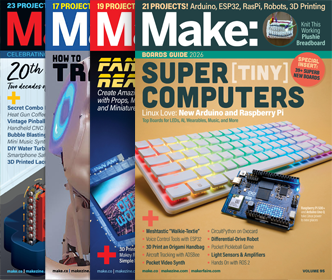Motion Induced Blindness
 From Michael’s “Optical Illusions & Visual Phenomena…This is pretty freaky, you stare at the green dot in the middle, as the background grid turns the yellow dots will disappear. Steady fixation favours disappearance, blinks or gaze shifts induce reappearance. All in all reminiscent of the Troxler effect, but stronger and more resistant to residual eye movements. Might be cool to make a video game that has this effect.
From Michael’s “Optical Illusions & Visual Phenomena…This is pretty freaky, you stare at the green dot in the middle, as the background grid turns the yellow dots will disappear. Steady fixation favours disappearance, blinks or gaze shifts induce reappearance. All in all reminiscent of the Troxler effect, but stronger and more resistant to residual eye movements. Might be cool to make a video game that has this effect.




 If you’re working on, know of, or are interested in car & transportation hacking- submit the best car hacks, mods, personal stories, project ideas, DIY links, etc.
If you’re working on, know of, or are interested in car & transportation hacking- submit the best car hacks, mods, personal stories, project ideas, DIY links, etc. 
 I’m going to use
I’m going to use 
 Make Flickr pool member apbeatty is
Make Flickr pool member apbeatty is 
 WOW.
WOW. 
 Finally some DS hacking…“Most of us will remember Wednesday, April 13th 2005. On that day, Tim Schuerewegen released the driver and application necessary to allow anyone with a Nintendo DS, a GBA flash cart, and a supported wireless network card to load any homebrew demo/app on their DS. You already had the ability to do this with a PassMe device, but now can do it wirelessly!”.
Finally some DS hacking…“Most of us will remember Wednesday, April 13th 2005. On that day, Tim Schuerewegen released the driver and application necessary to allow anyone with a Nintendo DS, a GBA flash cart, and a supported wireless network card to load any homebrew demo/app on their DS. You already had the ability to do this with a PassMe device, but now can do it wirelessly!”. 
 Because you can… here’s a site devoted to
Because you can… here’s a site devoted to 